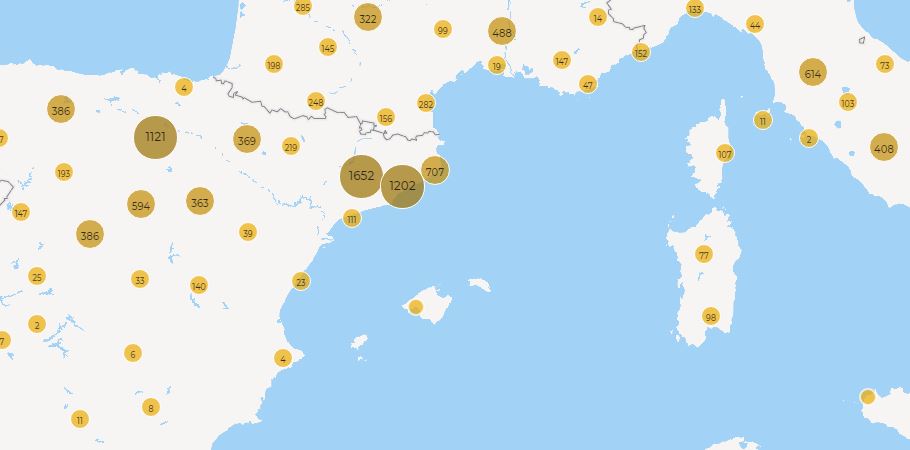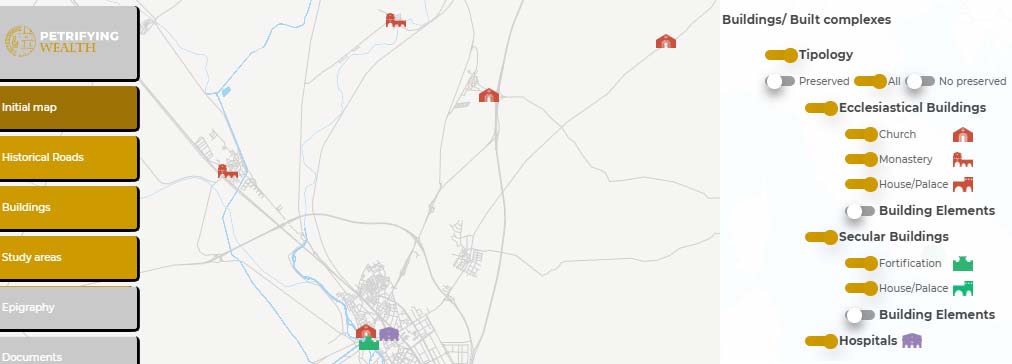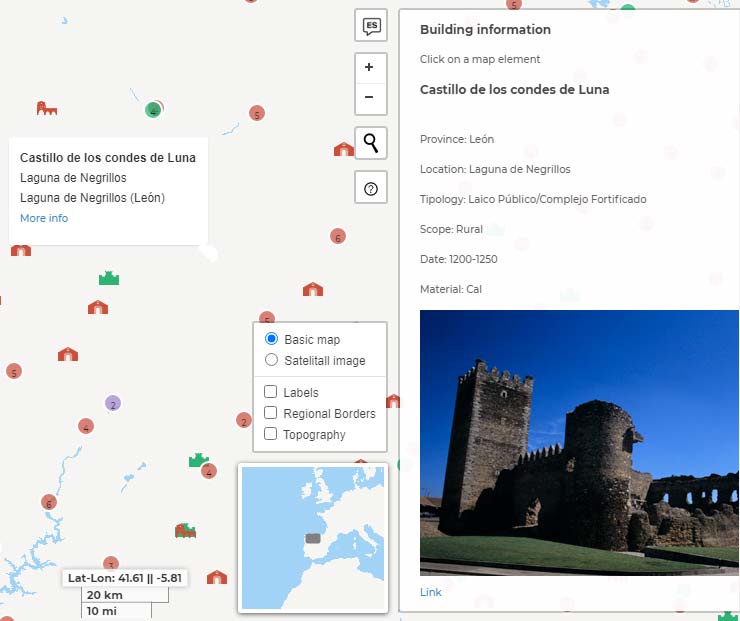21 enero 2021
The European Research Council Project Petrifying Wealth. The Southern European Shift to Masonry as Collective Investment in Identity, c. 1050-1300 announces the open-access publication of its cartographic viewer, which gathers and geolocates over 17,000 buildings with surviving material remains from the 11th to 13th centuries across Iberia, Italy, and southern France (link). The mapping design features a narrowing action from general view to individual building in order to visualize the extraordinary spread of medieval petrification and its monumental legacy, a presence that is still a fundamental element of the European landscape.

Through the cartographic viewer some initial research results of the Petrifying Wealth project can be seen; these entail a census and systemization of all ecclesiastical and secular constructions that blanketed the medieval territory in this period. The typology of buildings, their chronology, the materials used for construction, the inscriptions relating to them, as well as the lost buildings for which only documentary evidence remains: all are the objects of our on-going research efforts. Together with a detailed data base covering these topics, our complete results will be made publicly available by the end of the project, placing the enormous analysis potential of the information we have gathered into the hands of scholars and the public alike for further consultation and interpretation.

The development of this cartographic viewer is owed to years of sustained collective effort by project members, old and new. It is also the result of institutions and individuals who have shared their excellent work with us and allowed us to build on it; we are happy to give them credit for some of the data. By sharing our research freely, we seek to bring this useful mapping tool, able to interact with other georeferenced data sources, to a broad and diverse audience, making the stone structures of the Middle Ages visible in a practical and stimulating way.


